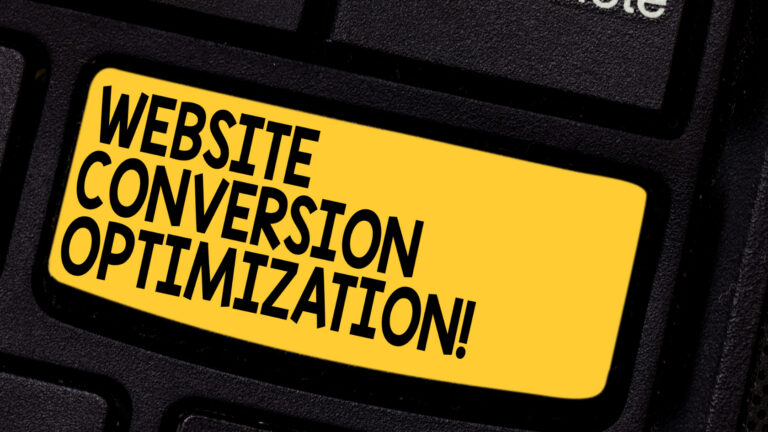
Do you want your website to rank higher on search engine results?
Then, listen up! SEO-friendly landing page designs are essential for boosting your online visibility.
By optimizing your landing pages for search engines, you can attract more organic traffic and increase your chances of converting visitors into customers.
In this article, we’ll explore the key elements of effective landing page SEO and show you how to improve your website’s performance.
Take control of your online presence and start maximizing your SEO potential today!
Key Takeaways
- SEO-friendly landing page designs improve website visibility and attract organic traffic.
- Clear call-to-action buttons and persuasive content increase the chances of visitors taking desired actions.
- Thorough keyword research helps optimize landing pages with relevant content.
- Optimizing meta tags, such as title and description, improves visibility in search results.
Importance of Seo-Friendly Landing Pages
Using SEO-friendly landing pages is crucial for improving your website’s visibility and attracting more organic traffic. These landing pages are designed with specific SEO techniques in mind, ensuring that your content is easily discoverable by search engines.
By optimizing your landing pages for SEO, you can reap numerous benefits for your website. First and foremost, SEO-friendly landing pages can significantly improve your website’s search engine rankings, making it more likely for users to find your site when they search for relevant keywords.
Additionally, these pages are also instrumental in conversion optimization. By implementing elements such as clear call-to-action buttons, compelling content, and user-friendly navigation, SEO-friendly landing pages can effectively guide visitors through the conversion funnel, increasing the chances of them taking the desired action, such as making a purchase or filling out a form.
Key Elements for Effective Landing Page SEO
To optimize your landing pages for SEO, it’s essential to incorporate key elements that enhance their effectiveness and maximize their visibility on search engines.
One of these key elements is conducting thorough keyword research. By identifying the right keywords to target, you can optimize your landing pages with relevant content that matches what users are searching for. This increases the likelihood of your pages appearing in search engine results and driving organic traffic.
Additionally, conversion optimization is another important element. By ensuring your landing pages are designed with conversion in mind, you can create a seamless user experience that encourages visitors to take the desired action, such as making a purchase or filling out a form. This involves elements such as clear call-to-action buttons, compelling headlines, and persuasive copy.
Optimizing Landing Page Content for Search Engines
When it comes to optimizing your landing page content for search engines, there are a few key points to keep in mind.
Firstly, keyword placement is crucial for ensuring that your content is relevant and easily discoverable by search engines.
Secondly, optimizing your meta tags, such as the title and description, can greatly improve your page’s visibility in search results.
Keyword Placement Importance
Optimize your landing page content for search engines by strategically incorporating keywords. Keyword placement is crucial for improving your website’s visibility and driving organic traffic.
To begin, conduct thorough keyword research to identify the most relevant and high-ranking terms in your industry. This will help you understand what your target audience is searching for and how you can align your content to meet their needs.
Once you have your keywords, focus on on-page optimization by strategically placing them in your page titles, headings, meta descriptions, and throughout your content. However, be cautious not to overuse keywords as it can negatively impact your search engine rankings. Instead, aim for a natural and seamless integration that provides value to both search engines and your visitors.
Meta Tag Optimization
Improving your landing page’s search engine visibility and driving organic traffic can be achieved through effective meta tag optimization. SEO friendly meta tags play a crucial role in improving your website’s ranking on search engine result pages (SERPs).
Meta tags provide search engines with information about your landing page, helping them understand its content and relevance to user queries. By optimizing meta tags using best practices, you can increase the chances of your landing page appearing in relevant search results.
Here are a few meta tag optimization tips:
- Include relevant keywords in your title tag.
- Write compelling meta descriptions that accurately describe your page’s content.
- Ensure your meta tags align with the overall theme and purpose of your landing page.
Following these meta tag best practices can greatly enhance the visibility and discoverability of your landing page on search engines.
Content Relevance for SEO
To further enhance your landing page’s search engine visibility and drive organic traffic, it’s important to focus on optimizing the content’s relevance for SEO.
One crucial aspect of content optimization is content length. Search engines tend to favor longer, more in-depth content as it provides more value to users. However, it’s important to strike a balance and ensure that the content remains concise and engaging.
Conducting thorough keyword research is also essential. By identifying the keywords and phrases that your target audience is using to search for information, you can strategically incorporate them into your content.
This won’t only improve your page’s visibility in search results but also ensure that the content is relevant and valuable to your audience.
Mobile-Friendly Design for Better SEO Performance
Mobile-friendly design is crucial for improving your SEO performance.
By optimizing your website for mobile devices, you increase your chances of higher search engine rankings.
Additionally, a mobile-friendly design provides a better user experience, leading to increased engagement and conversions.
Importance of Mobile Optimization
You need to optimize your landing page for mobile devices to improve your SEO performance. Mobile optimization is crucial because more and more people are using their smartphones and tablets to browse the internet.
By implementing mobile-first design principles and responsive web design techniques, you can ensure that your landing page looks and functions flawlessly on any screen size. Mobile-first design means creating a website with the mobile user in mind first, and then adapting it for larger screens.
Responsive web design allows your landing page to automatically adjust and adapt to the device it’s being viewed on, providing a seamless user experience. Mobile-friendly design not only improves your SEO performance but also enhances user satisfaction, increases conversion rates, and boosts your overall online visibility.
Higher Search Engine Rankings
By optimizing your landing page for mobile devices, you can significantly improve your SEO performance and achieve higher search engine rankings.
Mobile-friendly design has become crucial in today’s digital landscape, where more and more users access websites and search engines through their smartphones and tablets.
Search engines, like Google, prioritize mobile-friendly websites in their rankings because they want to provide the best user experience for their users.
When your landing page is mobile-friendly, it loads quickly, is easy to navigate, and provides a seamless user experience across different devices.
This, in turn, leads to higher user engagement, longer time spent on your page, and lower bounce rates.
All of these factors contribute to better search engine rankings, ensuring that your website is visible to a larger audience and driving more organic traffic to your business.
Improved User Experience
Optimizing your landing page for mobile devices improves user experience, leading to better SEO performance.
With the increasing number of people using their smartphones to browse the internet, it’s crucial to ensure that your landing page is mobile-friendly. A mobile-friendly design allows users to easily navigate your page, view content, and interact with your website. This improved user experience not only keeps visitors engaged but also increases the likelihood of them converting into customers.
Mobile-friendly designs are more likely to load quickly, reducing bounce rates and keeping users on your site longer. By providing a seamless mobile experience, you aren’t only satisfying your users but also sending positive signals to search engines, ultimately improving your conversion rates and boosting your SEO performance.
Enhancing User Experience for Higher Search Rankings
Enhancing the user’s experience is crucial for achieving higher search rankings. To improve page load speed, optimize your landing page by compressing images, minifying CSS and JavaScript files, and utilizing browser caching. This will ensure that your page loads quickly, providing a seamless experience for users.
Additionally, incorporating multimedia elements, such as videos and images, can engage users and make your landing page more visually appealing. However, it’s important to optimize these elements for speed as well, by using the correct file formats and sizes.
Utilizing Relevant Keywords in Landing Page Design
To make your landing page SEO-friendly, you need to incorporate relevant keywords in its design. One of the first steps in doing this is conducting keyword research. This involves identifying the search terms and phrases that your target audience is using to find products or services similar to yours. By understanding these keywords, you can strategically include them in your landing page design to increase its visibility in search engine results.
Additionally, on-page optimization is crucial in utilizing relevant keywords effectively. This includes optimizing the meta tags, headings, and content of your landing page to align with your chosen keywords.
Measuring and Improving Landing Page SEO Performance
Now, let’s delve into how you can measure and improve the performance of your landing page’s SEO.
To effectively measure SEO effectiveness, you can use various tools such as Google Analytics or Moz Pro to track important metrics like organic traffic, bounce rate, and conversion rate. These metrics will help you understand how well your landing page is performing in terms of attracting and engaging visitors.
In addition to measuring SEO effectiveness, optimizing your landing page load speed is crucial. Slow loading pages can negatively impact user experience and lead to higher bounce rates.
To improve load speed, you can compress images, minify CSS and JavaScript, and leverage browser caching.
How Can Visual Appeal Impact the SEO-Friendliness of a Landing Page Design?
The landing page visual appeal plays a crucial role in enhancing the SEO-friendliness of a website. Engaging images, videos, and graphics not only captivate visitors but also lower the bounce rate, thereby improving the page ranking. A visually appealing landing page can encourage longer dwell time and higher user engagement, contributing to better SEO performance.
Final Thoughts
It’s crucial to prioritize the creation of SEO-friendly landing page designs.
By incorporating key elements such as optimized content, mobile-friendly layouts, and a positive user experience, you can enhance your search engine rankings.
Additionally, utilizing relevant keywords in your design can further improve your visibility.
Remember, measuring and continuously improving your landing page’s SEO performance is essential for achieving long-term success in attracting organic traffic.
- Writing Content That Converts Visitors Into Customers - 04/11/2025
- How to Plan a Content Calendar That Works - 29/10/2025
- SEO Content vs. Social Media Content: What’s the Difference? - 23/10/2025


